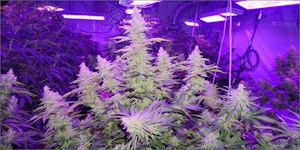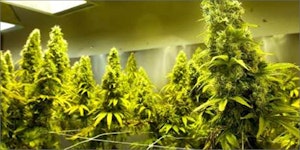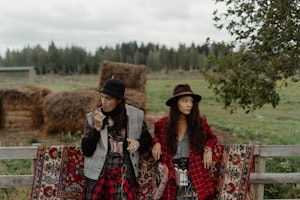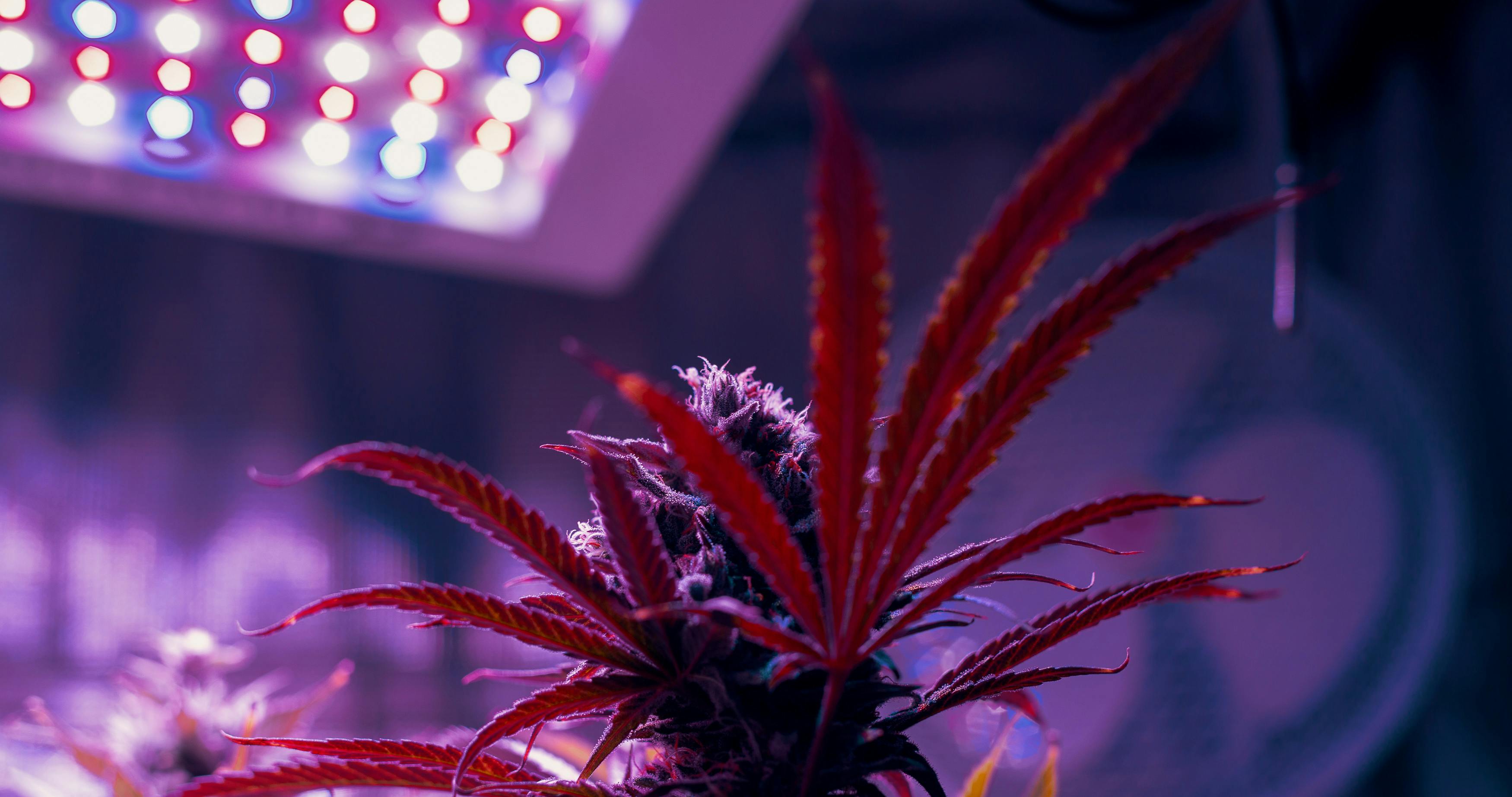
Photography by Georgia Love for Herb
Everything You Need To Know About Grow Lights
The right lights can make or break your grow.
When starting a new grow op, lighting should be one of the very first things that growers consider. Nutrients, grow technique and water levels could all be in perfect proportion, but it wouldn’t mean a thing if cannabis plants are left in the dark. To help you build the perfect grow operation, here is everything you need to know about grow lights.
What is a Photoperiod?
In short, the photoperiod is the amount of light a cannabis plant needs at different stages of growth. This is most often expressed as a 24-hour day/night ratio. For example, during the vegetative period, most cannabis plants will need 18 hours of light to 6 hours of complete darkness, while during the flowering period they will usually need 12 hours of light and 12 hours of darkness.
It is important to remember that a plant’s photoperiod needs to remain relatively uninterrupted; frequent and erratic changes in the photoperiod ratio are strongly discouraged. Some growers like to experiment with variations in light, though these changes are made slowly and gradually. For example, a grower might take a 12/12 photoperiod and decide to give a plant slightly more light to see if it increases yields, changing to a 13/12 photoperiod.
Cannabis plants have two key photoperiods which determine how they grow. In order to better explain this process, Herb caught up with Christopher Sloper, author of The LED Grow Book, and Chief Horticultural Officer at FOHSE in Las Vegas.
“Photoperiod controls the stages of the plant’s life – vegetative or flowering. To do this, plants rely on a light-harvesting complex called phytochrome. During the day, exposure to red light excites phytochrome into a higher energy state. While in this elevated state, short day plants, such as cannabis, will not flower.
The vegetative growth stage is controlled by keeping phytochrome excited. This is accomplished by keeping the lights on for 18 hours. Some growers will tout this can be extended 24 hours but just like humans, plants need to rest, so no more than 20 hours on 4 hours off is my best advice.
It takes about 12 hours of darkness for phytochrome to “relax” enough to allow it to flower. This is why cannabis growers change their lights cycle to 12 hours on and 12 hours off when they want their plants to flower.
However, time is not phytochrome’s only influencer. Phytochrome can also be de-energized through exposure to far-red light. Some elite growers are experimenting with keeping the lights on up to 14 hours then exposing the garden to far-red light for a short interval (15-20 minutes). This far-red exposure speeds up the conversion of phytochrome to its ground state.
The reason for experimenting with daylength-extension is to allow the plant to engage longer in photosynthesis while remaining in the flowering state for an additional two hours each day. That’s an increase of over 16% which would equate to a similar increase in harvest weight.”
Strains and species have varying needs when it comes to their photoperiod, so it’s best to ask about your specific cannabis plant’s needs when buying seeds. Sativas usually require more light to flower, for example, as they originate in tropical areas where sunlight is a perfectly balanced 12/12 year-round. Indicas, which originate in parts of the world which receive less evenly balanced natural photoperiods may require less light. Finally, Ruderalis the species from which auto-flowering seeds are bred, do not require specific photoperiod regimens in order to flower.
Growing with High-Intensity Discharge (HID)
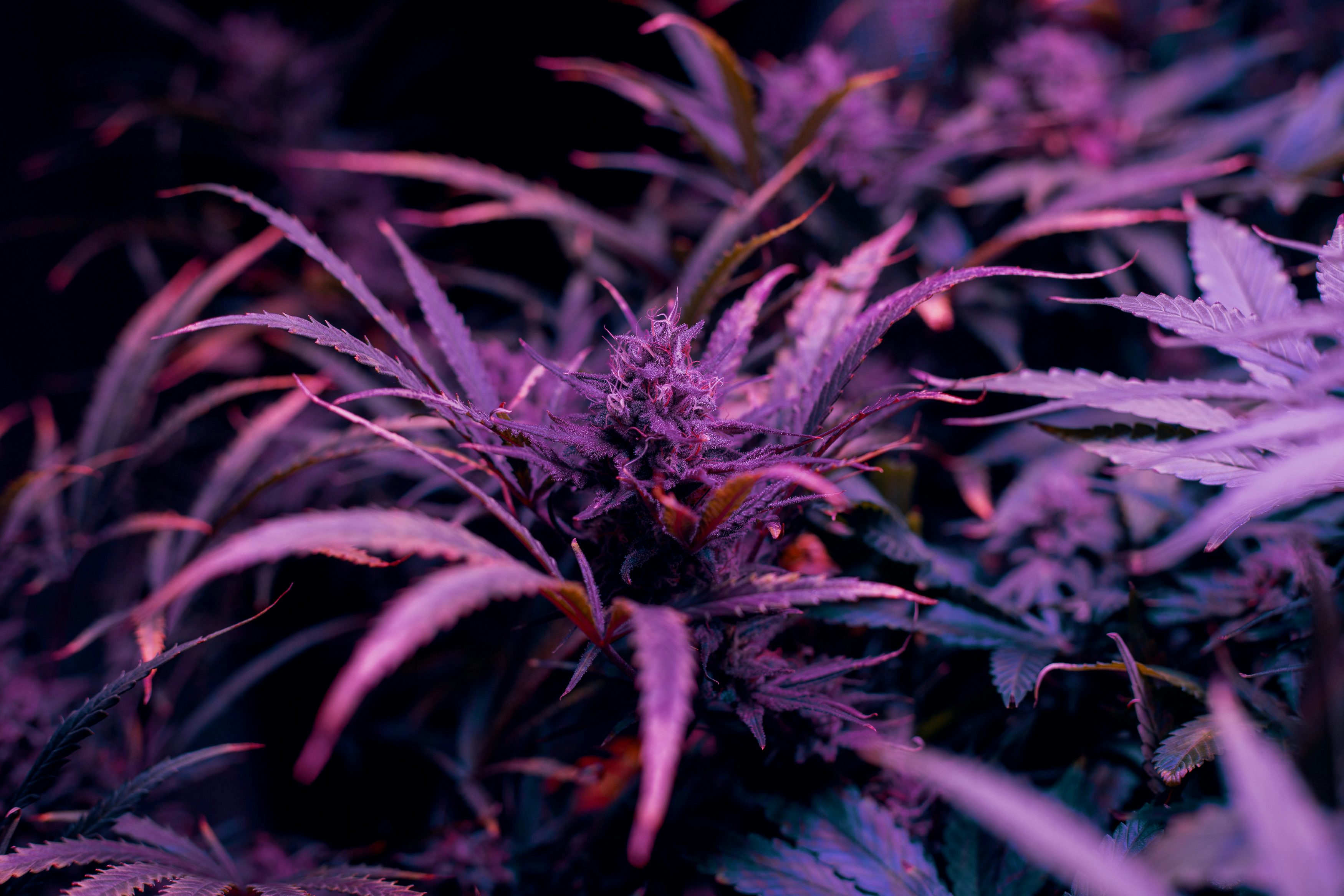
HID lights are the oldest available lighting system and include a range of options. It covers everything from High-Pressure Sodium to Metal Halide and offers the wide color spectrum that cannabis plants need to grow.
These lighting systems are a tried and true method which many growers continue to choose. Many HID setups involve the use of reflective surfaces to focus the light more precisely for the plant’s needs. They are lauded among growers for their lumens-per-watt output and the balanced spectrum of light they offer. They are generally thought of as having far better light penetration, meaning that plants grown under HIDs absorb more light energy.
However, this home grow favorite – which is nearly 50-year-old tech – now faces competition in efficiency from LEDs which are becoming the lighting of choice among large-scale commercial growers.
Growing with Compact Fluorescent Lightbulbs (CFL)
CFL lights are relatively recent to the growing world, and are one of the cheapest options available to growers. Fluorescent lights give off a full spectrum of light, similar to the sun, which cannabis plants need, but until recently, these lights had not been manufactured to provide enough wattage for cannabis grows.
The upshot to using CFL lights is that they give off far less heat than HID’s and can, therefore, be placed closer to the plants without burning them while also requiring far less ventilation in the room. However, these lights are not exactly the go-to-choice for experienced growers or large-scale operations.
“Commercially I have not seen T5 (standard tube fluorescent light) used for years,” says Sloper, “If I even see a T5 fixture in a commercial grow facility, the lamps have been switched out to LED-based T5 replacements. They have gotten competitively priced compared to fluorescent T5, with significantly longer life and no maintenance, that there is no reason not to re-lamp T5 fixtures with LEDs. I do still see them for sale at the hydroponic suppliers most likely for the hobby/home grower market.”
Growing with LED Light Bulbs
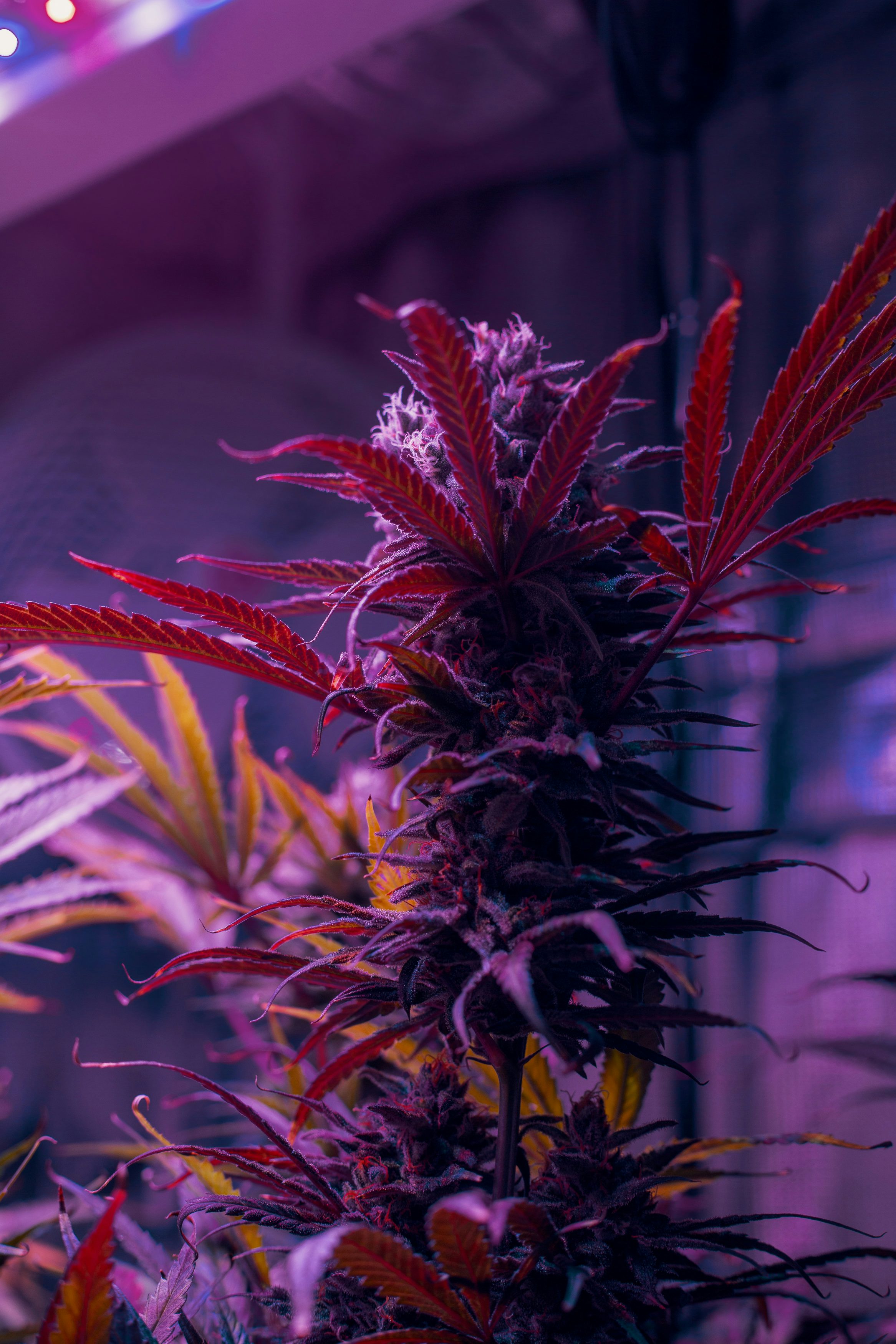
LED lights are becoming an increasingly popular choice among growers for the wide spectrum of light and precision they offer. When asked about the benefits and drawbacks LEDs offer Sloper had this say:
“The major benefits of LEDs come from power savings. With commercial/industrial grade LED grow lights use about 30-40% less electricity to deliver the same amount of light (PPFD) over their HIDcounterpartss. This, in turn, saves 10-20% of HVAC costs because less heat is released into the room.
A second advantage is that LEDs are a directional light source leading to increased target efficiency. If you look at a typical HID room, there is a lot of wasted light on the walls and aisles (when not using rolling benches) because HID has low target efficiency.
If the LED light is made from quality emitters, they can also have an extremely long life with no lamp changes. There are many LED grow light manufacturers using inferior emitters that begin to drop below 90% output (L90) of the initial photon density after only 4,000-5,000 hours – nowhere near the commonly reported 50,000 hours.
Another major advantage is safety. Recently here in Las Vegas, we had two grows that had HID lamps explode and catching plastic tables in the grow on fire. Thankfully no one got injured.
Unfortunately, one had $500k and the other $700k in crop loss. LEDs don’t have a violent end of life potential – they just continue to fade away.
The main disadvantage of LED is the upfront cost. They are significantly more expensive for the initial purchase compared to HIDs. Additionally, LED grow lights are still suffering from their initial “black-eye”. When the first commercial LED grow light was introduced it completely overrepresented its performance. Advertised as a 90-watt unit that could replace a 400-watt because of spectrum was and still is a joke. Even worse when tested the “90-watt” units actually consumed 52-watts – nowhere enough.”
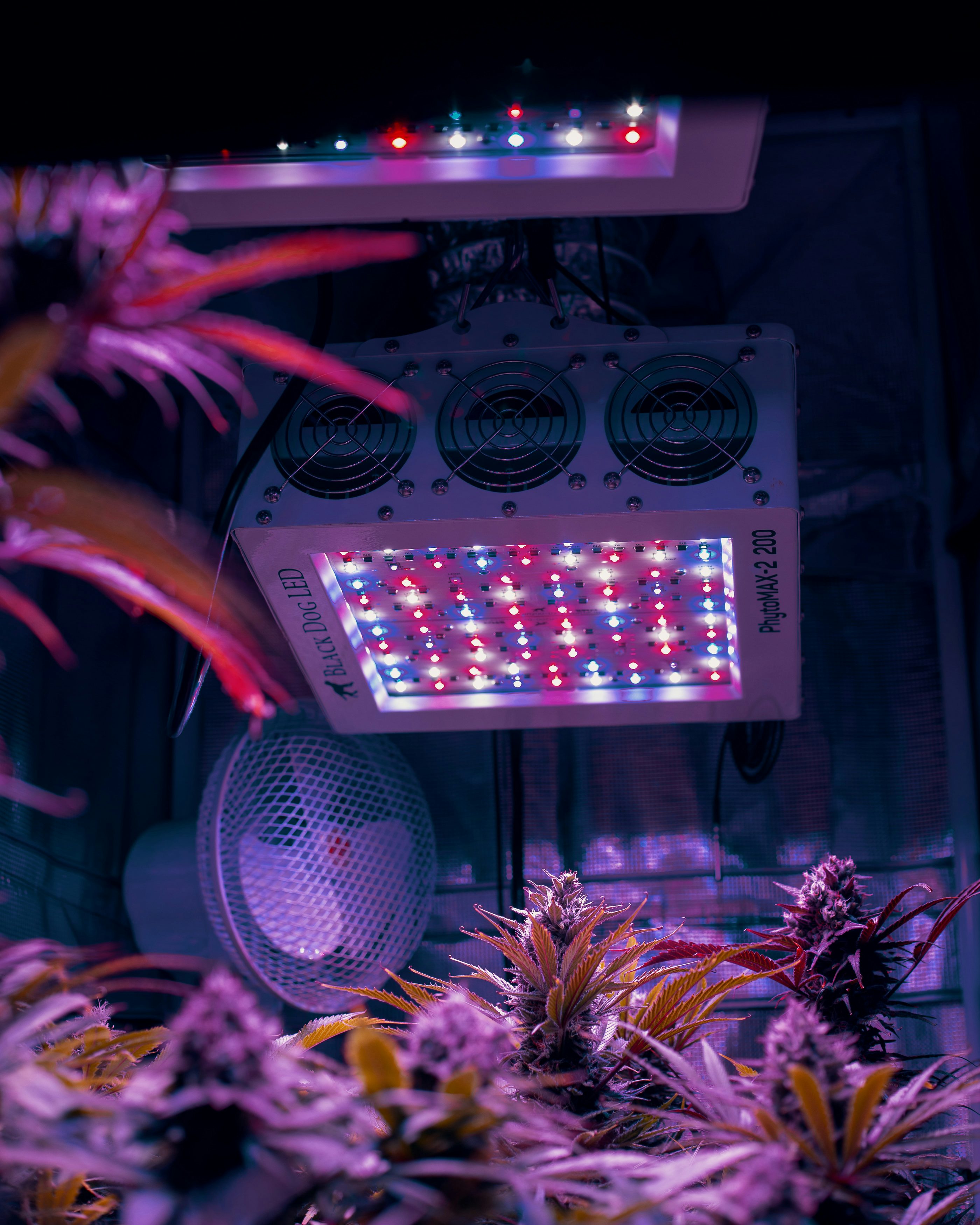
Night Lighting for Cannabis
As mentioned above, a plant’s photoperiod should be disturbed as little as possible. Yet some claim that if you absolutely need to check your grow at night, the best option is to use a greenlight. Sloper thinks it’s a little more complicated than that.
“There is a huge debate over green light,” he says. “The basic problem begins with the chlorophyll chart that everyone remembers from high school biology. It clearly shows that those pigments have the strongest absorbance in the red and blue regions of the light spectrum. Next, the more “savvy growers” try to convince the world that green is not used as much by referring to the old study that KJ McCree completed in 1972, pointing to the dip in relative quantum yield, and then state green light is not as useful.
The reality is, plants do absorb green light, but some plant species grab approximately 80% of the exposed green photons and use it for photosynthetic work. The reflected green light has the opportunity to “bounce” further into the canopy and be absorbed by a different leaf. Additionally, plants have functions to protect themselves from overexposure. One of these methods is to basically shut down red and blue absorption and allow green to continue driving photosynthesis.
In my opinion, there is no truly ‘safe’ light for night time use. However, when people enter a grow during the dark period and use green lights, the exposure in both intensity and duration is typically not enough to cause any noticeable changes in the plants. My advice is to plan ahead and only enter the grow when the lights are off in the event of emergencies.
The next thing that comes up is when/how to spray the plants. Most are under the old myth that you can’t spray with the lights on. This is simply not true (with the exception of heavy horticultural oils and HID lights as the heat can cook the oils and cause damage). If this was true, one would think that we could only crop dust our fields at night.”
Grow Room Lights: Setup Options
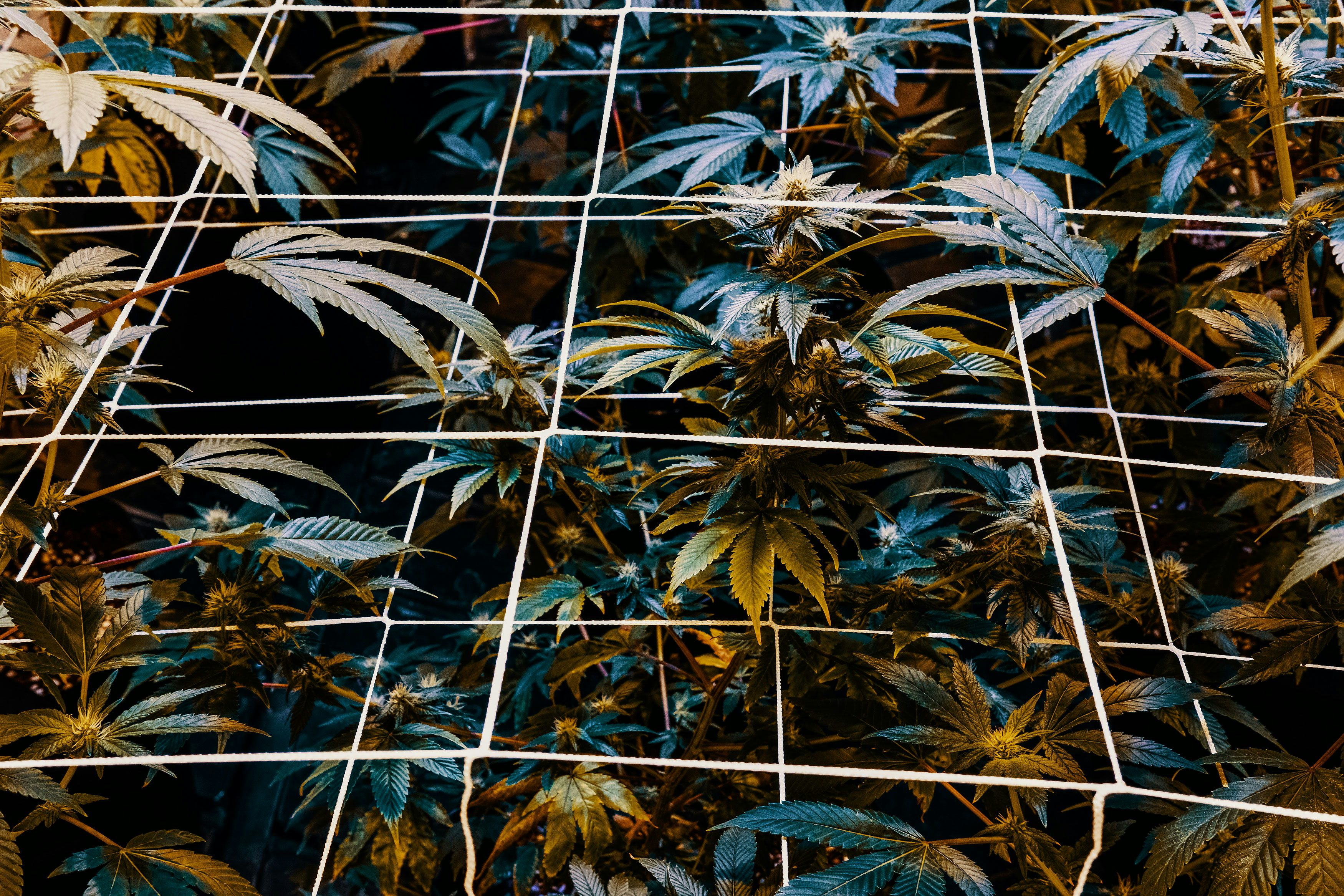
There are several things to consider when setting up your lighting system. From the spacing of the plants to the ventilation in the room, choosing a technique can be intimidating. Luckily, most techniques, when implemented properly can produce similar results in yields.
“There are so many theories out there about this,” Sloper says. “In my decades of experience, I have found almost no increase in yield between techniques (SCROGing, topping, fim’ing, etc.) and that its usually root/plant total size not number or arrangement of colas.
Canopy manipulation is key. This starts in the veg room by pruning your plants into the shape of the particular growing style. Keeping the plants close to maximize canopy density while allowing a small space between plants to allow air flow is crucial. The real answer like most things in cultivation is: it depends. The physical dimensions (think single vs. multi-tiered) of the grow space often dictate the method.”
Rotation is also a major factor in your grow’s success. Some growers insist that plants should be rotated once a day so that all parts of the plant receive adequate light, while other methods can be used in grow rooms that require no rotation at all.
“With good planning and proper pruning in both veg and flower onset (never prune a plant that is the first few weeks of flower as you can create all kinds of hormonal imbalances) you really should not have to rotate plants,” says Sloper. “Every time a person handles a plant it induces some level of stress. One goal of modern cultivation is to reduce stress at every level. This rule can be broken when intentionally inducing for specific responses, such as using Harpin protein, to make the plant think it’s under attack when it’s not.”
Then there is the use of side-lighting and reflective surfaced which can be used to ensure that light penetrates densely packed grow rooms:
“Reflective hoods can and are used in HID lighting. Just make sure the design does not focus the light back on to the lamp as this will prematurely wear it out. LEDs don’t need reflectors as they are a directional source.
My thoughts on side lighting are it goes against the location and orientation of the light-harvesting complexes within leaf tissues. Plants might have some adoption within their life cycle, but ultimately would have to be bred to truly take advantage of side (or intra-canopy) lighting. Basically, there are far more chlorophyll antenna on the top leaf surfaces than the bottom.”
Grow Light Distance

One major factor in lighting a grow op is determining the spacing for your lights. When placed too far, the plants don’t absorb the ideal amount of light, but when placed too close a grower risks burning their plant. A good place to start, particularly with HID lamps, is to try holding your hand under the light at a distance that feels comfortable.
So, what is the ideal distance to place lights to get the maximum results?
“This is not a question that can be broadly answered as there are too many variables,” says Sloper. “The correct question is what are your desired light levels (in PPFD) and work backward from there.
The height (or diming) may be completely different in different parts of the room. Edges vs. center light heights/dimming can and usually are different. This is why the elite LED manufacturers model out the light using AutoCAD-like programs. This allows them to build maps that pinpoint where every photon will land.”
Best Light Temperature for Growing Plants
Then, there’s temperature. Since some lights can radiate extreme levels of heat, and certain pests and diseases can only thrive at specific temperatures, maintaining the proper temperature for your grow is crucial.
What is the ideal light temperature for growing?
“HIDs and LEDs have different grow room optimum temperatures,” says Sloper. “It all comes down to leaf surface temperature. Since HIDs produce lots of infrared heat, growers keep HID room temperatures cooler than LEDs – somewhere between 75-80 degrees F.
Since LEDs don’t produce infrared energy, LED grow rooms need to be kept a bit warmer. I typically recommend increasing the temp of the room (compared to HID) by several degrees and dial it in for your environment from there. If starting out new, I recommend 82-85 deg F as a beginning point.
Furthermore, there is no ideal leaf surface temperature. Each strain is different and experimentation is key. Sorry, no shortcuts given here!”
Growing Cannabis in Natural Light
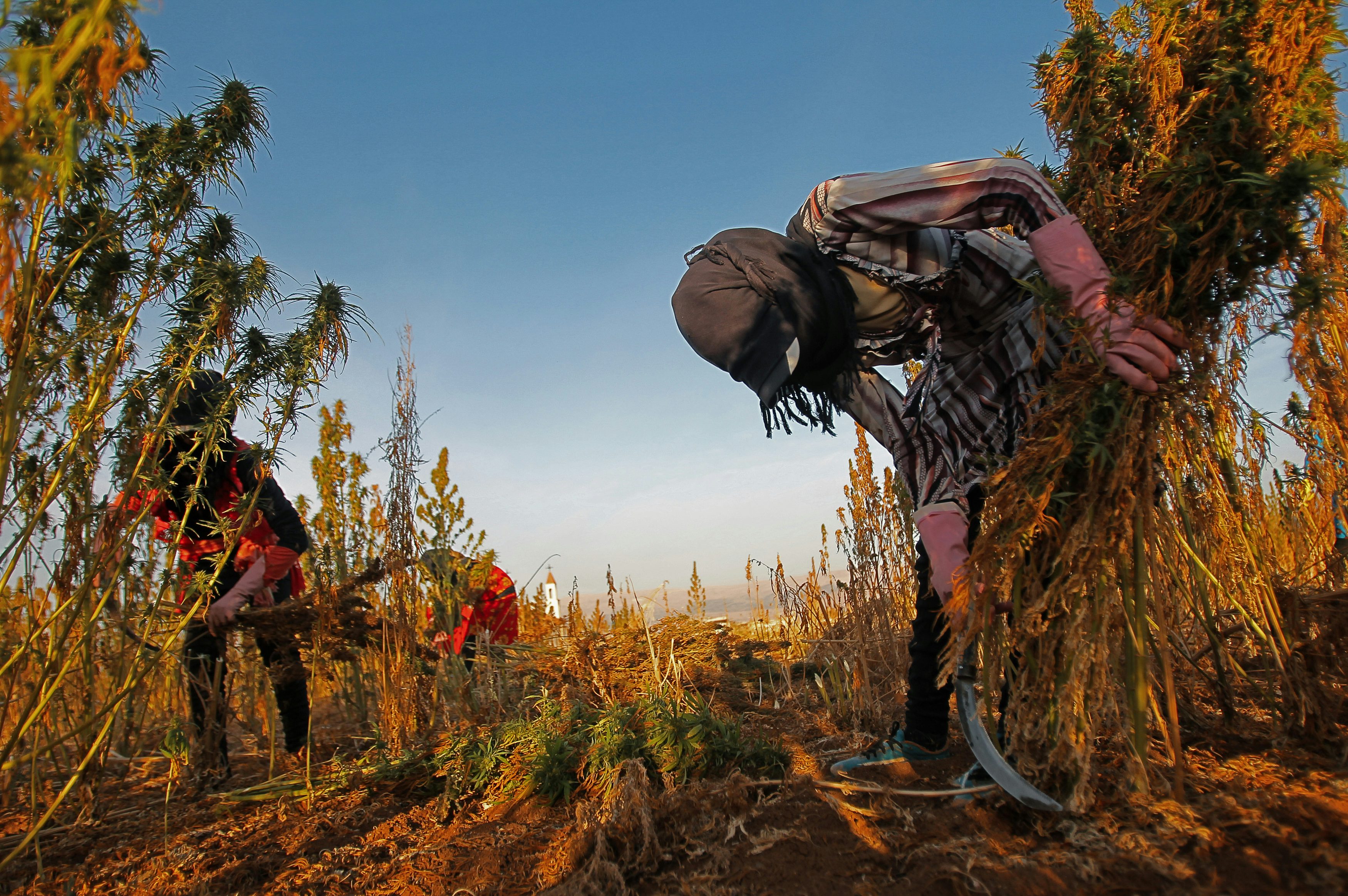
With many states and countries around the world joining in on the legalization movement, growing outdoors is becoming more popular. Outdoor grows are a favorite for some master growers like Jorge Cervantes.
“I’m not a big fan of indoor cannabis cultivation that requires artificial lighting,” says Cervantes. “Grow lights use too many natural resources and increase the cost of production. When cannabis was illegal, indoor cultivation was mandatory to avoid arrest. In today’s legal climate, lights are not necessary unless augmenting sunlight.”
The obvious upshot of an outdoor grow is that sunlight is not only free, but photoperiods are controlled naturally. However, the setbacks can be significant. If you don’t live in an ideal environment for your strain, growing can be difficult. Growers may have more pests to deal with outdoors and may be limited in terms of the time of year they choose for cultivation and harvest.
Pros and Cons of Indoor Grow Lights
According to Sloper, “there are definitely advantages to growing indoors. The most important one is the grower is (mostly) in control of the environment while playing the role of mother nature. This leads to a fairly predictable environment, protection from pests, controlled crop cycle times, lack of storms.
The main disadvantage is it cost significantly more to grow indoors. Sunlight is free and growing in good old mother earth does not require benches or fancy systems.”
Herb Recommended Products:
READ MORE
